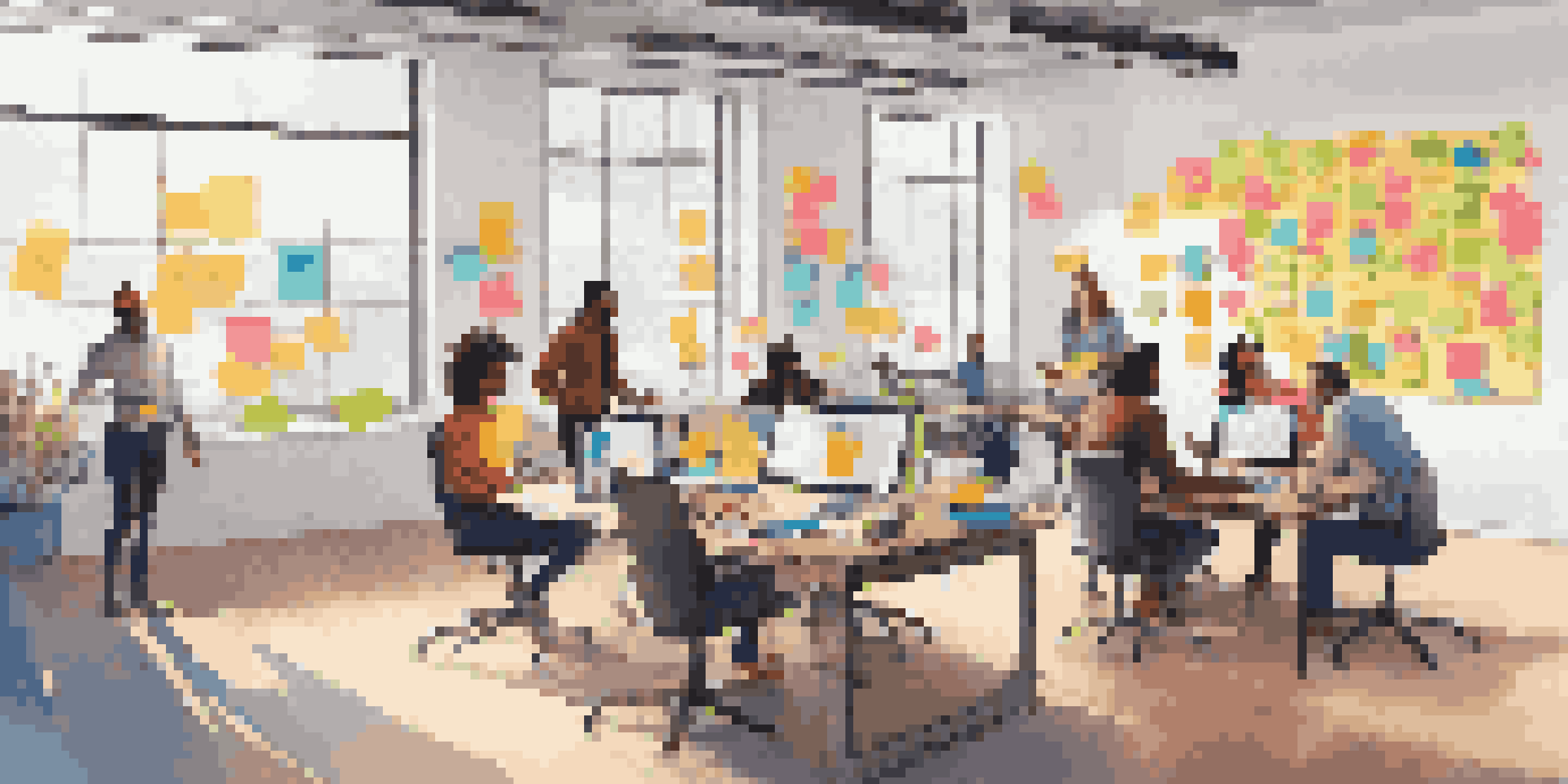The Role of Collaboration in Effective HCI Design Processes

Understanding the Importance of Collaboration in HCI Design
Collaboration is at the heart of effective Human-Computer Interaction (HCI) design. It brings together diverse perspectives, ensuring that various user needs are addressed. Just like a symphony, where each instrument contributes to a harmonious outcome, collaboration in HCI leads to a more user-centered design.
Alone we can do so little; together we can do so much.
When designers, developers, and users collaborate, they can identify potential issues early in the design process. This proactive approach not only saves time but also resources, making the final product more intuitive and user-friendly. Think of it as a group project in school; the more input you have, the better your chances of acing it.
Moreover, collaboration fosters innovation. Different backgrounds and expertise can spark creative solutions that a single individual might not envision. In the fast-evolving tech landscape, this collective innovation is crucial for staying ahead of the curve.
Key Players in the HCI Collaboration Process
In HCI design, several key players contribute to the collaborative process. These often include user experience (UX) designers, graphic designers, developers, and, importantly, the end-users themselves. Each group brings unique insights that can shape the design's effectiveness.

For instance, while UX designers focus on how users interact with the system, developers ensure that these interactions are technically feasible. This collaboration can lead to a seamless experience, much like a well-oiled machine where every part works in harmony.
Collaboration Enhances HCI Design
Bringing together diverse perspectives ensures user-centered designs and fosters innovation.
Additionally, involving end-users in the design process can provide invaluable feedback. Their firsthand experiences can highlight what works and what doesn’t, allowing for adjustments that truly enhance usability. In essence, users are the most important collaborators in creating effective HCI.
Tools and Techniques for Collaborative HCI Design
There are various tools and techniques available to facilitate collaboration in HCI design. Design thinking workshops, for example, encourage brainstorming sessions that allow participants to freely share ideas. This open environment can lead to breakthrough concepts that address user needs better.
Innovation thrives in collaboration.
Digital collaboration tools, such as Figma or Miro, enable real-time feedback and iterations across teams, regardless of their location. Just like a virtual whiteboard, these tools make it easy to visualize ideas and keep everyone on the same page.
Moreover, regular meetings and check-ins are essential to ensure that all stakeholders are aligned. These sessions help clarify roles and responsibilities, allowing the team to work efficiently towards a common goal. Think of it as regular huddles in a sports team to strategize and adjust play.
Building Trust and Communication Among Team Members
Trust and open communication are vital components of a successful collaborative environment. When team members feel safe to express their thoughts and ideas, creativity flourishes. It's much like a supportive friendship where honesty leads to growth.
Establishing clear communication channels can help prevent misunderstandings and ensure that everyone is on the same page. Whether through project management tools or regular updates, clarity is key to maintaining momentum in the design process.
Key Roles in HCI Collaboration
Involving UX designers, developers, and end-users provides unique insights that shape effective designs.
Moreover, fostering a culture of respect and appreciation within the team can significantly enhance collaboration. Recognizing each member's contributions not only boosts morale but also encourages continued engagement and innovation.
Iterative Feedback Loops in Collaborative HCI Design
Iterative feedback loops are essential in refining HCI designs through collaboration. By continuously gathering input from team members and users, designers can make informed adjustments to enhance usability. This process resembles sculpting, where each feedback session chisels away imperfections to reveal a better outcome.
Regular usability testing with real users can uncover insights that might be overlooked in a more insular environment. By observing how users interact with a prototype, teams can pivot quickly to address any pain points, ensuring a smoother final product.
This iterative process not only improves the design but also builds a sense of ownership among team members. When everyone sees their feedback being implemented, it fosters a commitment to the project's success, creating a win-win scenario for all involved.
Overcoming Challenges in Collaborative HCI Design
Despite its benefits, collaborative HCI design can face several challenges. Differences in opinions and working styles can lead to conflicts, which, if unresolved, may hinder progress. Addressing these challenges early on is crucial to maintaining a positive collaborative environment.
Additionally, time constraints can make collaboration difficult, as team members may struggle to find overlapping schedules. To combat this, setting clear deadlines and expectations can help everyone manage their time effectively, ensuring that collaboration remains a priority.
Iterative Feedback Drives Improvement
Continuous input from team members and users refines designs, enhancing usability and ownership.
Furthermore, ensuring that all voices are heard can be challenging, especially if some team members are more vocal than others. Encouraging quieter members to share their thoughts can lead to richer discussions and a more well-rounded design process.
The Future of Collaboration in HCI Design
Looking ahead, collaboration in HCI design will likely continue to evolve with advancements in technology. Tools that enhance remote collaboration, like virtual reality (VR) meeting rooms, may soon become commonplace. This could revolutionize how teams brainstorm and iterate on designs.
Moreover, as the field of HCI grows, the importance of interdisciplinary collaboration will become even more significant. Bringing in experts from various fields—like psychology, sociology, and anthropology—can provide deeper insights into user behavior and preferences.

Finally, fostering a culture that values collaboration will be essential for innovation in HCI design. Encouraging ongoing partnerships and open dialogues will not only enhance design outcomes but also drive the industry forward. As we move into the future, embracing collaboration will be key to creating technology that truly serves its users.